Staying the course on federal fuel economy and emissions standards, vehicle electrification and all its challenges, and advancements in clean vehicles and fuels, were key themes addressed at this year’s Advanced Clean Transportation (ACT) Expo in Long Beach, Calif.
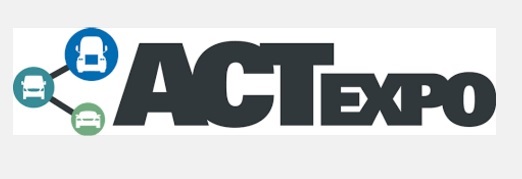 Keynote speakers at “Global Trends Accelerating Advanced Transportation Innovation” on Tuesday morning said they would prefer to see that the single national emissions standard launched during the Obama administration stay in effect during a time when the Trump administration prepares to roll back the federal fuel economy and emissions standards. Mary Nichols, chairman, California Air Resources Board; Steve Gilligan, vice president, product and vocational marketing, at Navistar; Tamara Barker, chief sustainability officer and vice president of environmental affairs at UPS; Julie Furber, executive director of electrification at Cummins; and James Burrell, assistant vice president, advanced powertrain group, American Honda Motor Company, Inc., spoke to the issues.
Keynote speakers at “Global Trends Accelerating Advanced Transportation Innovation” on Tuesday morning said they would prefer to see that the single national emissions standard launched during the Obama administration stay in effect during a time when the Trump administration prepares to roll back the federal fuel economy and emissions standards. Mary Nichols, chairman, California Air Resources Board; Steve Gilligan, vice president, product and vocational marketing, at Navistar; Tamara Barker, chief sustainability officer and vice president of environmental affairs at UPS; Julie Furber, executive director of electrification at Cummins; and James Burrell, assistant vice president, advanced powertrain group, American Honda Motor Company, Inc., spoke to the issues.
California and 16 other states had announced that morning that they have jointly sued the U.S. Environmental Protection Agency over EPA Administrator Scott Pruett’s decision to roll back standards for vehicles built from 2022 through 2025. While the feedback period has been reopened by the Trump administration, the EPA administrator is preparing to cut back the standards with the argument that they’re too difficult for automakers to achieve.
ACT Expo 2018 was a platform for several significant announcements:
Electric trucks: Battery technology is improving so rapidly, it is becoming more realistic to expect faster adoption of commercial battery electric vehicles (CBEVs), according to Mike Roeth executive director of North American Council for Freight Efficiency (NACFE). Roeth gave a presentation on a guidance report released May 1 at the conference by NACFE analyzing the interest fleet owners have in electric trucks and the challenges faced to transition over from diesel to electric. Fleets using EVs for urban delivery in predictable routes between 50-100 miles per day are likely to be the first adopters of electric trucks and vans as the industry norm, according to the study.
Several speakers and panelists during the week addressed the issues that vehicle electrification faces in fleet adoption. One of these concerns is substantial growth needed in the charging infrastructure that faces challenges in funding, securing space on real estate properties, and meeting building code enforcement.
Meritor and Blue Horizon: Jay Craig, CEO and president of Meritor, gave a keynote presentation about how Meritor, an automotive components manufacturer, is investing and adapting to clean technologies. Rather than fighting off new clear air standards, his company decided to embrace the technology and move it aggressively to market, he said. Meritor also launched Blue Horizon during ACT Expo, a new technology brand representing the company’s emerging platform of advanced technologies centered on electric drivetrain, efficiency, and connectivity systems. Products offered under the new brand will include integrated electrified solutions for Class 4-8 commercial vehicles across multiple vocations, including pickup and delivery, drayage/terminal tractors, transit and school buses, as well as linehaul and other heavy-duty applications.
Award winners: This year’s winners of the ACT Expo awards recognizing fleet operators who show true leadership in clean transportation were — Total Transportation Services, Inc. (TTSI) in the Leading Carrier category; Stark Area Regional Transportation Authority (SARTA) in Canton, Ohio for the Transit & Mobility category; City of Dublin, Ohio in the Leading Public Fleet category; Bimbo Bakeries USA for Leading Private Fleet; and WallyPark for Leading Airport Fleet.
Propane vehicles: More than 13,000 propane autogas fleet vehicles were sold in 2017, according to data compiled by the Propane Education & Research Council. The new vehicles will annually consume approximately 36.8 million gallons of propane, and many will be displacing fuels with higher emissions like gasoline and diesel. “Propane autogas overcame significant challenges in 2017 — from the absence of federal incentives for alternative fuels from the federal government, to incredibly low gasoline and diesel prices throughout much of the year — and we received an overwhelming endorsement for our fuel in all markets. Propane autogas sales virtually held steady in a year where the conventional fuels held all of the advantages,” said Michael Taylor, director of autogas business development for PERC.
Clean Cities anniversary: The U.S. Department of Energy’s Clean Cities program will be celebrating its 25th anniversary this year. More than 100 Clean Cities coalitions have collectively saved more than 8.5 billion gallons of petroleum nationally, according to the DOE. Comprised of business leaders and fuel providers, government agencies and community groups, the coalitions continue to support and develop projects designed to cut petroleum use in transportation.
New company name: Trillium CNG has changed its company name to Trillium. The company has been a top supplier of CNG services for more than 20 years and will continue in that space. Company officials simultaneously announced the name change and a partnership with California-based EV Connect, a provider of electric vehicle (EV) charging solutions. “We believe our company name should fully reflect our offerings. By adding alternative fueling solutions like EV charging and hydrogen fueling to our portfolio we are helping customers reduce tailpipe emissions. Pairing those solutions with renewable fuels reduces the total lifecycle emission profile of our customers’ fleets,” said Bill Cashmareck, managing director of Trillium.
California’s investment in clean vehicles: California officials announced that the state has invested more than $1.2 billion into projects that put a growing number of zero-emission and low-carbon buses, trucks, and cars onto California’s roads and highways. About 48% of these investments have been directed toward low-income and disadvantaged neighborhoods – those most in need of improvements in air quality. One of these projects will be delivering dozens of electric school buses to rural school districts to help bring low-carbon transportation to students and drivers.
Electric delivery van: Workhorse Group and commercial vehicle supplier Dana Inc. unveiled a Class 5 van powered by a jointly-built electric axle. The all-electric vehicle is a combination of the chassis and battery pack from a Workhorse E-Gen van, the body of a Morgan Olson UPS delivery truck, and the new Dana axle. The concept vehicle is not yet scheduled for production but interest from potential customers could bring it to market, according to Workhorse.
Fleets using biodiesel: According to a new 2018 Fleet Purchasing Outlook study conducted by the NTEA – The Association for the Work Truck Industry – 75% of fleet respondents planning to acquire trucks in 2018 anticipate maintaining or increasing use of diesel engine powered trucks. Additionally, the survey indicated that biodiesel is now the most popular alternative fuel option on the market, followed by E85, CNG, and electric hybrid. Survey data shows 18 percent of fleet participants use biodiesel now – up from 15% in 2017.
Ultra Clean Diesel: Renewable Energy Group, Inc. unveiled REG Ultra Clean Diesel, a patent-pending fuel blend of renewable diesel and biodiesel. “REG Ultra Clean Diesel is a CARB approved fuel that significantly reduces emissions, blends easily with petroleum diesel, and is one of the cleanest and lowest carbon intensity liquid fuels available,” said REG’s Gary Haer, vice president, sales and marketing. “REG is uniquely positioned to offer both our biodiesel and renewable diesel in a blended product. We are committed to delivering solutions to our customers in support of clean air and sustainability initiatives.”
ROUSH unveils EVs: ROUSH CleanTech unveiled its newest carbon footprint-friendly vehicle — an all-electric vehicle built on the Ford F-650 chassis. The all-electric vehicles will have a lithium-ion battery system of up to 225 kilowatt hours and 700 volts. Depending on the vehicle’s GVWR, the average range will be up to 120 miles with a top speed of 75 miles per hour. “An electric battery option for medium-duty trucks and buses is a great fit as there is increasing demand in this gross vehicle weight range (GVWR) with very few OEM solutions,” said Todd Mouw, president. “This builds from our robust foundation already in place at ROUSH CleanTech that supports more than 1,200 customers and 19,000 propane and natural gas units on the road.”
Peterbilt also goes electric: Heavy-duty truck manufacturer Peterbilt launched its all-electric Model 579. It was built by the company in collaboration with Transpower, the California Air Resources Board, and the Port of Long Beach. The heavy-duty Model 579 truck has been designed as a drayage application tractor that will go into service soon at the Port of Long Beach. It’s got 490 horsepower with a 200-mile range through its battery pack with the options of 350-to-440 kWh of power. The recharge takes up to five hours.
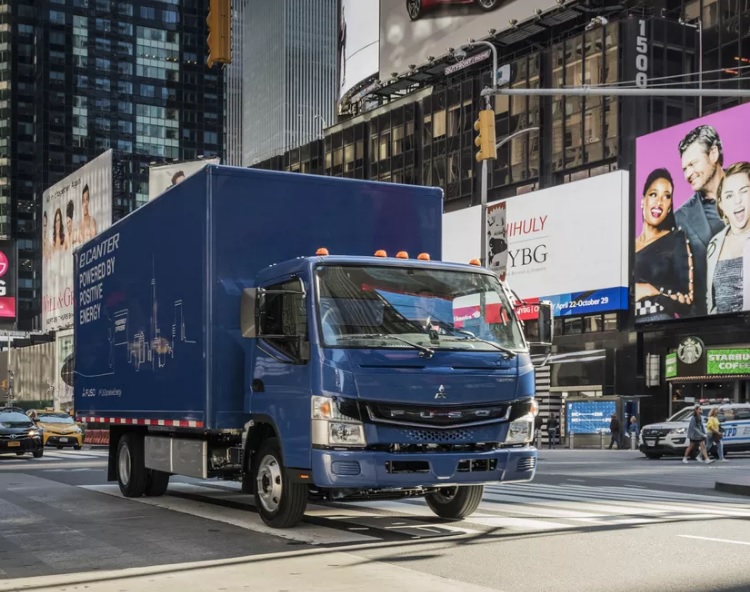 programs will launch later this year, and the company will go to full-scale production by 2021. During an event at Portland International Raceway in Portland, Ore., an electric version of its Freightliner Cascadia heavy-duty truck was revealed, along with an electric version of its M2 medium-duty truck. The eCascadia will go about 250 miles per charge, and the eM2 will go about 230, the company said. Daimler has previously shown off its Thomas Built battery electric Saf-T-Liner school bus and the electric Fuso eCanter delivery truck. “We are the undisputed global leader of the trucking industry and we want to remain in that position with regards to electric trucks,” said Martin Daum, global head of Daimler’s Trucks & Buses division.
programs will launch later this year, and the company will go to full-scale production by 2021. During an event at Portland International Raceway in Portland, Ore., an electric version of its Freightliner Cascadia heavy-duty truck was revealed, along with an electric version of its M2 medium-duty truck. The eCascadia will go about 250 miles per charge, and the eM2 will go about 230, the company said. Daimler has previously shown off its Thomas Built battery electric Saf-T-Liner school bus and the electric Fuso eCanter delivery truck. “We are the undisputed global leader of the trucking industry and we want to remain in that position with regards to electric trucks,” said Martin Daum, global head of Daimler’s Trucks & Buses division.
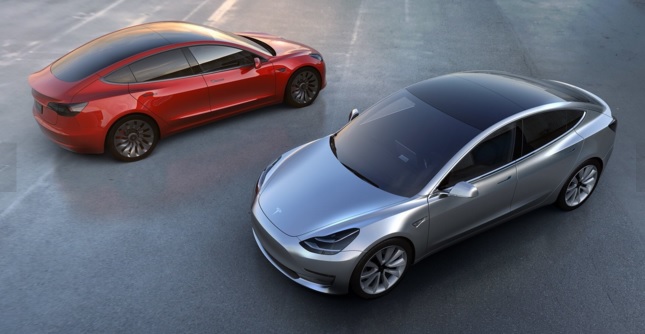 to recommend, said Jake Fisher, CR’s director of automotive testing. The strong rating comes after
to recommend, said Jake Fisher, CR’s director of automotive testing. The strong rating comes after  way. The electric carmaker has invested 100 million yuan ($15.8 million) and registered to establish a wholly owned company in Shanghai, a Chinese government agency has posted on its website. The national government has been working on ways that companies like Tesla can go outside its traditional model of establishing JVs with Chinese automakers to assemble cars in their country. Tesla’s registration includes technological development and services on EVs, auto parts, batteries, energy storage facilities and solar panel products. In this month’s earnings call, CEO Elon Musk said that the company will announce setting up a Gigafactory for batteries in China as early as the third quarter of this year; he’d previously said Tesla will probably be building the Model 3 and Model Y crossover in China.
way. The electric carmaker has invested 100 million yuan ($15.8 million) and registered to establish a wholly owned company in Shanghai, a Chinese government agency has posted on its website. The national government has been working on ways that companies like Tesla can go outside its traditional model of establishing JVs with Chinese automakers to assemble cars in their country. Tesla’s registration includes technological development and services on EVs, auto parts, batteries, energy storage facilities and solar panel products. In this month’s earnings call, CEO Elon Musk said that the company will announce setting up a Gigafactory for batteries in China as early as the third quarter of this year; he’d previously said Tesla will probably be building the Model 3 and Model Y crossover in China.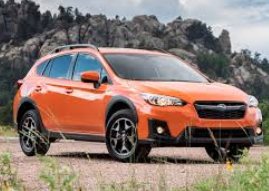 soon be launched, built on the Toyota Prius Prime drivetrain. Subaru has been showcasing EV concepts for years, including the Viziv series. The company launched a conventional gas-electric hybrid version during the 2014 model year. The new version will have a larger battery pack and a plug for owners to charge up their PHEV. It can be driven as a normal hybrid using both gas and electric power, or driven on pure electric drive for local commuting, the company said.
soon be launched, built on the Toyota Prius Prime drivetrain. Subaru has been showcasing EV concepts for years, including the Viziv series. The company launched a conventional gas-electric hybrid version during the 2014 model year. The new version will have a larger battery pack and a plug for owners to charge up their PHEV. It can be driven as a normal hybrid using both gas and electric power, or driven on pure electric drive for local commuting, the company said.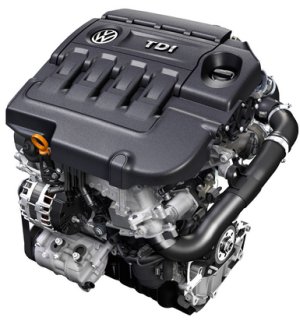 regulators on diesel emissions cheating. VW CEO Herbert Diess has been granted safe passage in the U.S. and advance notice if prosecutors seek to charge him, sources told Bloomberg. Last week, Diess told investors during the company’s annual shareholder meeting in Berlin that
regulators on diesel emissions cheating. VW CEO Herbert Diess has been granted safe passage in the U.S. and advance notice if prosecutors seek to charge him, sources told Bloomberg. Last week, Diess told investors during the company’s annual shareholder meeting in Berlin that  Keynote speakers at “Global Trends Accelerating Advanced Transportation Innovation” on Tuesday morning said they would prefer to see that the single national emissions standard launched during the Obama administration stay in effect during a time when the Trump administration prepares to roll back the federal fuel economy and emissions standards. Mary Nichols, chairman, California Air Resources Board; Steve Gilligan, vice president, product and vocational marketing, at Navistar; Tamara Barker, chief sustainability officer and vice president of environmental affairs at UPS; Julie Furber, executive director of electrification at Cummins; and James Burrell, assistant vice president, advanced powertrain group, American Honda Motor Company, Inc., spoke to the issues.
Keynote speakers at “Global Trends Accelerating Advanced Transportation Innovation” on Tuesday morning said they would prefer to see that the single national emissions standard launched during the Obama administration stay in effect during a time when the Trump administration prepares to roll back the federal fuel economy and emissions standards. Mary Nichols, chairman, California Air Resources Board; Steve Gilligan, vice president, product and vocational marketing, at Navistar; Tamara Barker, chief sustainability officer and vice president of environmental affairs at UPS; Julie Furber, executive director of electrification at Cummins; and James Burrell, assistant vice president, advanced powertrain group, American Honda Motor Company, Inc., spoke to the issues. eet just published an in-depth look at
eet just published an in-depth look at 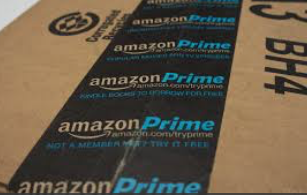 to its 100 million Amazon Prime subscribers. Millions of
to its 100 million Amazon Prime subscribers. Millions of 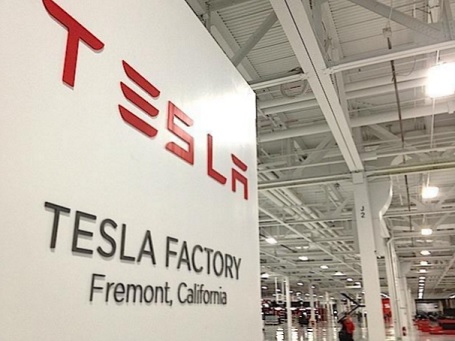 e number of injuries in the official count by stating some were minor or due to personal medical conditions. Tesla denied the accusations in a blog post, calling the publication an “extremist organization working directly with union supporters to create a calculated disinformation campaign against Tesla.”
e number of injuries in the official count by stating some were minor or due to personal medical conditions. Tesla denied the accusations in a blog post, calling the publication an “extremist organization working directly with union supporters to create a calculated disinformation campaign against Tesla.”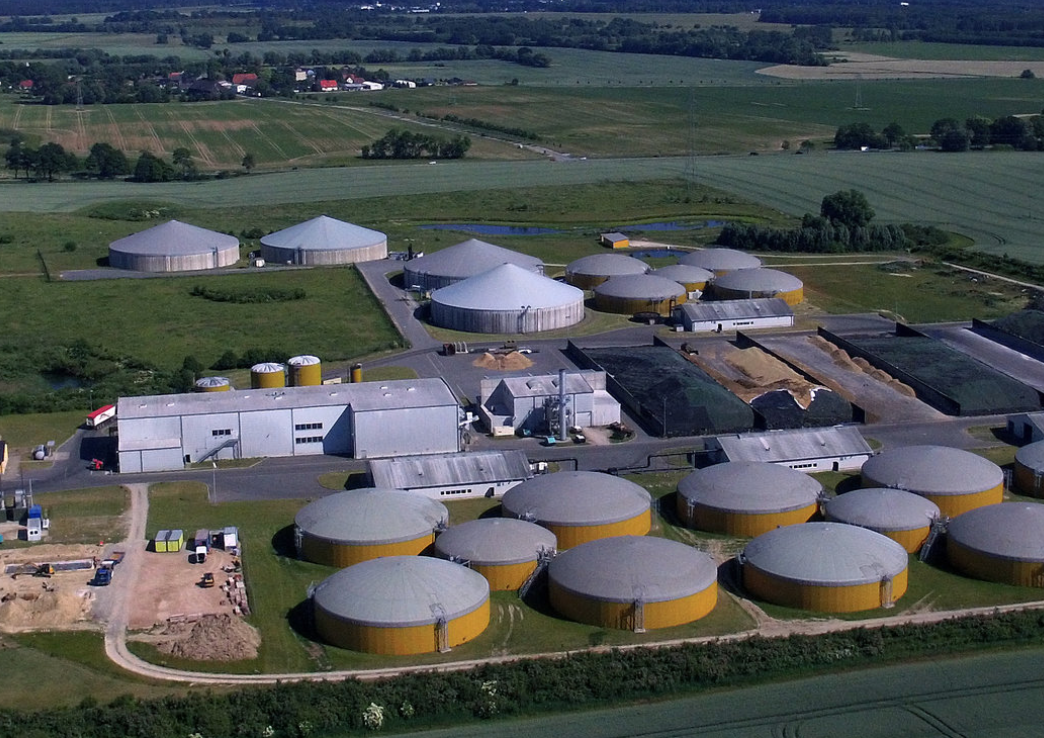 natural gas (RNG) production facilities in North America. The refreshed database shows that the RNG Coalition is on track to double the number of RNG production facilities in North America in half the time that was set in the original goal of what was to be accomplished by 2025. There were 51 RNG facilities in place at the time the coalition was formed in 2015. The new database shows an additional 23 RNG production facilities are currently under construction and another 23 have reached stages of substantial development prior to commencing construction. It also shows there are now at least 76 operations RNG facilities in North America, which makes for 85% growth from the 41 projects that were built between 1982 and 2014.
natural gas (RNG) production facilities in North America. The refreshed database shows that the RNG Coalition is on track to double the number of RNG production facilities in North America in half the time that was set in the original goal of what was to be accomplished by 2025. There were 51 RNG facilities in place at the time the coalition was formed in 2015. The new database shows an additional 23 RNG production facilities are currently under construction and another 23 have reached stages of substantial development prior to commencing construction. It also shows there are now at least 76 operations RNG facilities in North America, which makes for 85% growth from the 41 projects that were built between 1982 and 2014.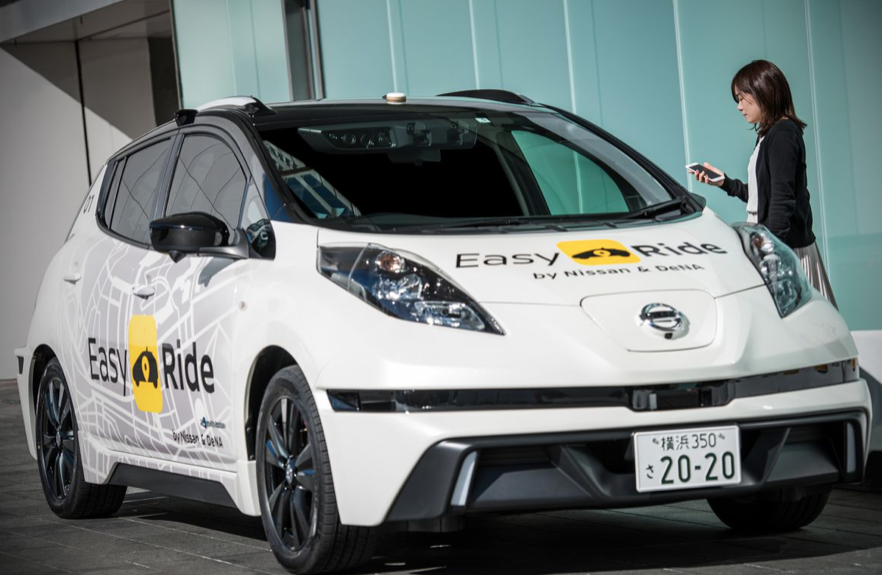 modified Nissan Leafs. Easy Ride taps into Seamless Autonomous Mobility, which was developed by Nissan from NASA technology, for the automaker’s fleet operation system. Unexpected occurrences are being tested, such as road construction or an event filled with cars and pedestrians blocking traffic. The robotaxi will have support from in-vehicle artificial intelligence and staff working at a control center monitoring the rides. Nissan is counting on its collaboration with DeNA, a Japanese mobile gaming and communications giant. Easy Ride comes with a DeNA-designed smartphone app, where users can hail a taxi by choosing a time slot and where they want to be picked up from a list of preset destinations. Riders view a tablet computer installed inside the car about recommended events in the area; and users are also sent discount coupons for restaurants participating in an Easy Ride affiliate program.
modified Nissan Leafs. Easy Ride taps into Seamless Autonomous Mobility, which was developed by Nissan from NASA technology, for the automaker’s fleet operation system. Unexpected occurrences are being tested, such as road construction or an event filled with cars and pedestrians blocking traffic. The robotaxi will have support from in-vehicle artificial intelligence and staff working at a control center monitoring the rides. Nissan is counting on its collaboration with DeNA, a Japanese mobile gaming and communications giant. Easy Ride comes with a DeNA-designed smartphone app, where users can hail a taxi by choosing a time slot and where they want to be picked up from a list of preset destinations. Riders view a tablet computer installed inside the car about recommended events in the area; and users are also sent discount coupons for restaurants participating in an Easy Ride affiliate program. partnership will start with providing the eDrive system for Olli. Beyond that, the companies will work on new technologies to accelerate future autonomous and transportation-as-a-service (TaaS) vehicle production.
partnership will start with providing the eDrive system for Olli. Beyond that, the companies will work on new technologies to accelerate future autonomous and transportation-as-a-service (TaaS) vehicle production.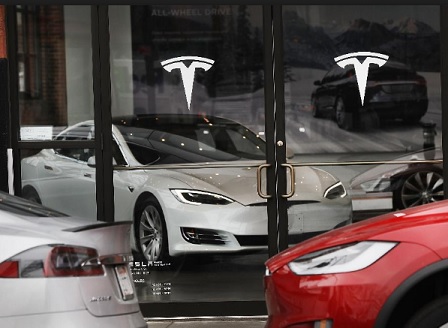 period of increasing challenges. On April 2,
period of increasing challenges. On April 2, 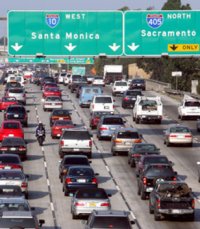 giving up their personal vehicles to switch over entirely to other modes of transportation — and that crossed over all the demographics of age, geographic region, education, and income levels. Only 6.5% of them found car ownership to be a hassle. The survey found that ride-hailing services provide some great benefits — especially in urban areas and in places where parking is an inconvenience.
giving up their personal vehicles to switch over entirely to other modes of transportation — and that crossed over all the demographics of age, geographic region, education, and income levels. Only 6.5% of them found car ownership to be a hassle. The survey found that ride-hailing services provide some great benefits — especially in urban areas and in places where parking is an inconvenience.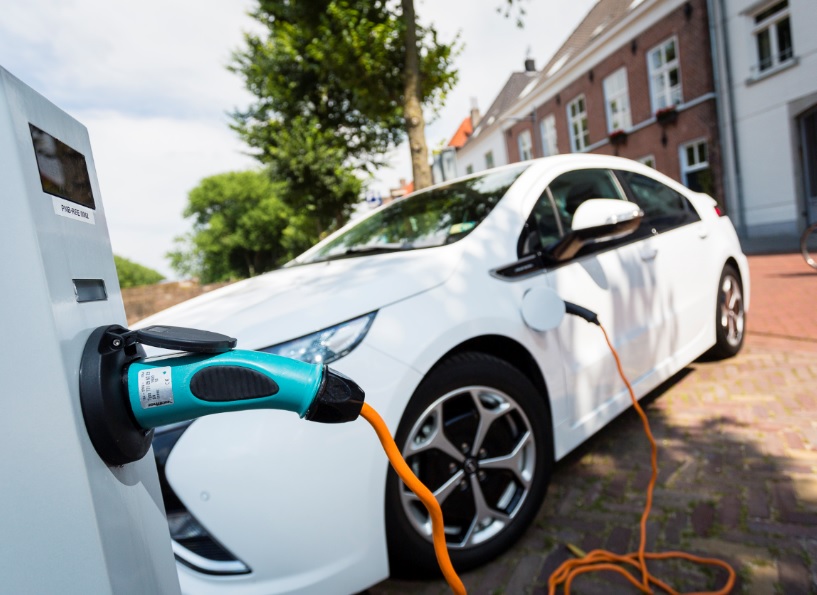 sales, the study explores steps that will need to be taken to make it up to 25% of new vehicle sales by 2030. To become mass producible, four factors will need to be addressed, according to McKinsey.
sales, the study explores steps that will need to be taken to make it up to 25% of new vehicle sales by 2030. To become mass producible, four factors will need to be addressed, according to McKinsey.